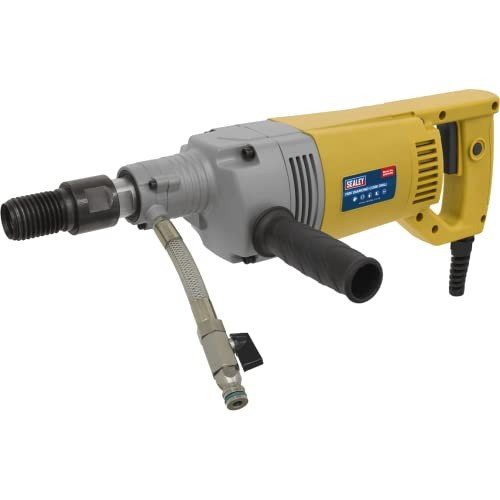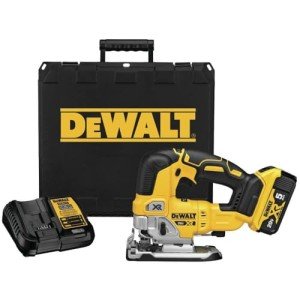5 Cliches About Power Tool Sale You Should Stay Clear Of
Agnes
0
4
01.06 19:26
 Power Tool Sales and Marketing Strategies for B2B Retailers
Power Tool Sales and Marketing Strategies for B2B RetailersPower tools are a staple for both consumer and professional use. Despite an expected slowdown in 2021 due to the COVID-19 pandemic the demand is still at or near pre-pandemic levels.
Home Depot is the leader in sales of power tools in terms of dollar share. Lowe's is not far behind. Both are competing against power tools manufactured in China.
Tip 1: Make an Engagement to Brands
Many industrial products manufacturers prioritize sales over marketing. This is because the long-term sales process requires a lot of back-and-forth communication and a thorough understanding of the product. This kind of communication isn't ideal for marketing that is based on emotion.
However, companies that make industrial equipment should reconsider their marketing strategy. The digital age has accelerated past traditional companies that rely on a small circle of retailers and distributors for sales.
The key to selling power tools is brand loyalty. If a client is committed to a certain brand they are less receptive to competitors' communications. In addition, they are more likely to buy power tool the product of the client again and recommend it to others.
To be successful on the United States market, you must have an organized strategy. This means adjusting your tools to meet the local requirements, positioning your brand in a strategic way, and making use of marketing channels and distribution channels. It is also important to work with local authorities and industry associations as well as experts. You can be assured that your power tool will be in compliance with the requirements and standards of the country if you do this.
Tip 2: Be aware of Your Products
Retailers should be familiar with the products they sell especially in a marketplace that places such a high importance on the quality of products. This will help them make informed choices about the products they offer. This knowledge can also make the difference between a successful sale and a poor one.
Knowing which tool is ideal for a particular project will help you match the right tool to your customer's needs. This will aid in building trust and loyalty with your customers. It will also give you assurance that you're offering a complete solution.
Understanding DIY culture trends can also help you understand your customers' needs. For example, a growing number of homeowners are undertaking home improvement projects which require power tools. This can lead to an increase in the sales of these tools.
According to Durable IQ, DeWalt leads in power tool share of 16%, although Ryobi and Craftsman brands have seen their share drop year-over-year. However the fact that sales on both stores and online tool shops are on the increase.
Tip 3: Offer Full-Service Repair
The majority of consumers purchase power tools to replace the broken one or tackle an upcoming project. Both of these tools offer the possibility of upselling or adding on sales.
According to the Home Improvement Research Institute (HIRI) 2020 Tracking Study of Power Tools and Accessories 35 percent of all purchases for power tools are the result of planned replacements. These customers typically require additional accessories or need to upgrade to higher quality models.
If your customer is a seasoned DIYer or just starting out in the hobby, they will likely require replacement of their power tools' carbon brushes as well as drive belts and power cords with time. These essentials will ensure that your customer gets the most from their investment.
Technicians must consider three important aspects when buying power tools the application, the way it will be used and safety. These aspects help technicians make educated decisions about the most suitable tools to use in their repairs and maintenance work. This helps them maximize the effectiveness of their tool and lower the cost of owning it.
Tip 4: Always Keep Up with Technology
The most recent power tools, like they feature smart technology that enhances user experience and differentiates them from those who rely upon old battery technology. Wholesalers of B2B that carry and sell these devices can boost sales by targeting professionals and contractors who are technologically advanced.
For Karch, whose business has more than three years of experience and a 12,000 square-foot tool department, keeping up with the latest technologies is crucial. "Manufactures are constantly changing the look of their products" he says. "They were able to hold their designs for five or ten years, but now they change them every year."
In addition to embracing modern technologies, B2B wholesalers should also be looking to improve existing models. By adding lightweight materials and adjustable handles, wholesalers can decrease fatigue caused by long-term use. These features are crucial for many contractors working in the field who utilize the tools for a lengthy period of time. The power tool uk tools industry is divided into professional and consumer groups which means that the major players are always working on enhancing their designs and creating new features that will appeal to an even larger audience.
Tip 5: Create a point of Sale
The e-commerce landscape has transformed the power tools market. The advancements in data collection techniques have enabled business professionals to gain an entire perspective of market trends, allowing them to shape strategies for inventory and marketing more effectively.
Point of sale (POS) data, for instance, allows you to track the types of projects DIYers undertake when they purchase power tools and accessories. Knowing what projects your customers are working on allows you to upsell and offer extras. It helps you anticipate your customers' needs to ensure that you have the right products in hand.
Furthermore, transaction data allows you to detect trends in the market and adjust your production cycles accordingly. For instance, you could utilize this information to track fluctuations in your brand and retail partner market shares, enabling you to adapt your product strategies to consumer preferences. Additionally, you can make use of POS data to improve inventory levels and reduce the chance of overstocking. It can also be used to determine the effectiveness of promotional campaigns.
Tip 6: Create an Point of Service
Power tools is a lucrative, complex market that requires substantial marketing and sales efforts in order to remain competitive. The traditional methods to gain a strategic advantage in this industry were through pricing or product positioning--but these strategies are no longer effective in today's multichannel marketplace in which information is dispersed rapidly.
Retailers that focus on customer service are more likely to retain customers and build brand loyalty. Mike Karch, the president of Nue's Hardware and online tools shopping, located in Menomonee Falls, Wisconsin, runs a 12,000 square-foot power tool department. His department initially featured a variety of brands. However when he spoke to contractors, he realized that they were loyal to their favorite brand.
To make a mark in their customers' business, Karch and his team first ask customers what they would like to accomplish using the tool, before showing them the tools they have available. This gives them confidence to recommend the best tool for the job and also builds trust with the customer. Customers who are familiar with their product are less likely than others to blame the store for a failure of a tool for the job.
Tip 7: Create an effort to be a Point of Customer Service
Power tool retailers face a fiercely competitive market. People who succeed in this area tend to be more loyal to a specific brand rather than to carry a variety of brands. The amount of space a retailer is able to devote to a category may also affect the number of brands they carry.
Customers usually require assistance when they visit to purchase a power device. If they're replacing an old model that's broken or taking on the task of renovating, customers need expert advice from sales associates.
Mike Karch, president of Nue's Hardware and Tools in Menomonee Falls, Wisconsin, says his sales staff is trained to ask the right questions to make a sale. They begin by asking questions about what the customer plans to use the tool for, he adds. "That's the best power tool deals way to decide what kind of tool they need," he says. Then they ask about the experience of the customer with various types of projects and the project.
Tip 8: Make sure to be sure to mention your warranty
The warranty policies of the power tool makers differ greatly. Some are completely complete, while others are stingy, or refuse to cover certain aspects of the tool at all. Before making a purchase it is crucial that the retailer understands the differences. Customers will only buy tools from companies that will provide a warranty.
Mike Karch, president of Nue's Hardware and Tools in Menomonee Falls, Wisconsin, has a 12,000 square-foot power tool department as well as an repair shop in-house that handles 50 lines of tools. He has observed that many of his contractor clients are loyal to their brands. So, he chooses to carry a select few brands instead of trying to offer samples of various products.
He also likes the fact that his employees have the opportunity to meet with vendors one-on-one to discuss new products and give feedback. This type of personal interaction is crucial because it helps to establish trust between the retailer and customers. Having good relationships with suppliers can even result in discounts on future purchases.

